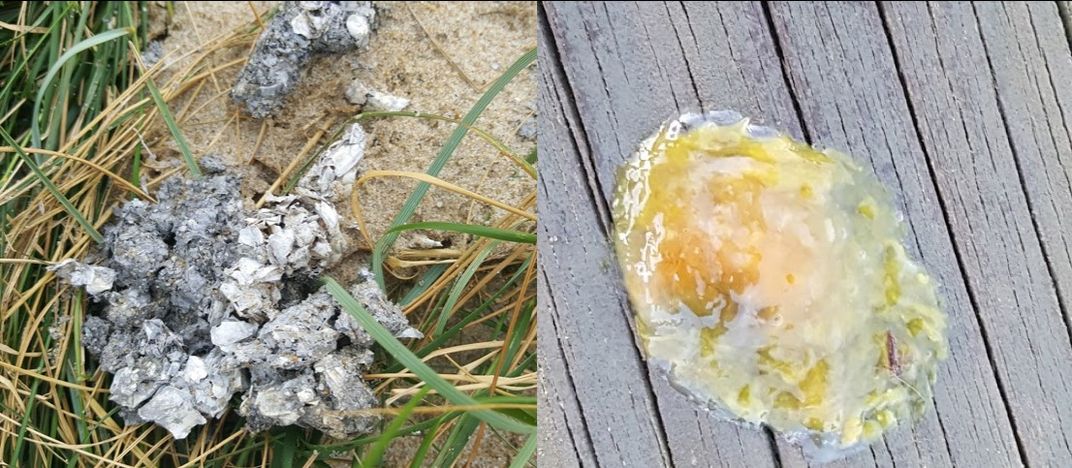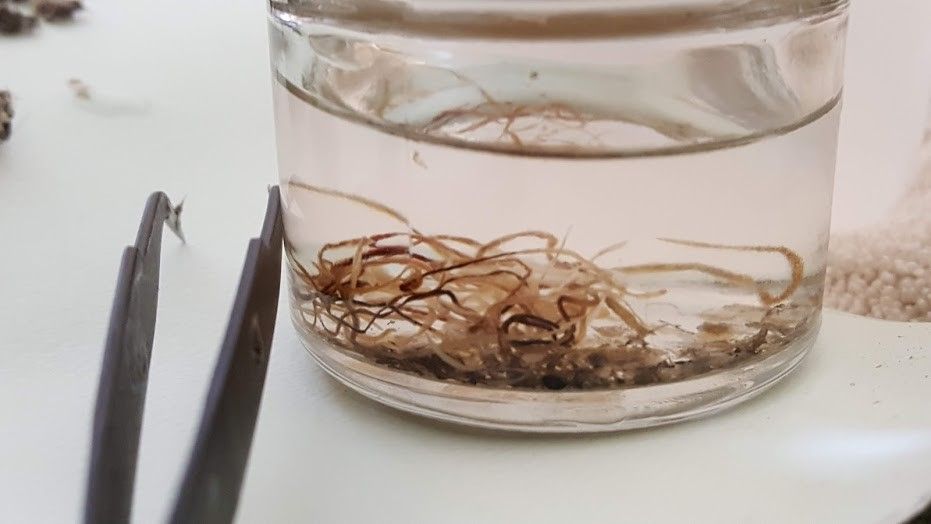SMITHSONIAN ENVIRONMENTAL RESEARCH CENTER
River Otters Take Party Pooping To A New Level
For river otters, pooping is a social event. And their droppings are providing a heap of information for biologists.
/https://tf-cmsv2-smithsonianmag-media.s3.amazonaws.com/blogging/featured/Lontra_canadensis_Keenan_Adams_USFWS.jpg)
To keep things tidy, humans have developed special rooms and solitary rituals for pooping. But for some animals, pooping is a social event.
Instead of “water closets,” North American river otters like to poop in piles near the water, called latrines. These are their social hubs, like going to the drive-in or mall. All animals must figure out if it’s worth hanging out together. On the upside, when otters are in groups, they “chat” in real time, exchange information, groom each other, build bonds, and play. However, groups also mean they face competition for resources, which range from mates and space to food. Latrines offer river otters a stinky “phone a friend” with their neighbors. Like the feed on a Facebook account, latrines keep otters up to date on who is around, how they are feeling, and who’s ready to have babies. Having this information about neighbors decreases fights, allows female otters and their pups to stay safe, and lets groups of bachelors broadcast their availability and territorial boundaries.
Video: River otters add their personal touch to a latrine on the docks of the Smithsonian Environmental Research Center. Night camera footage by Karen McDonald.
It’s not just poop you find in latrines. River otters also leave “anal jelly.” We're not talking about the store-bought jelly in glass jars found in grocery stores; we're talking stinky goo from inside of the otter. It has a jelly-like consistency and is thought to be the shedding of the otter’s intestinal lining, along with some undigested bits of food, and anal secretions to add a personal fragrance (eau de otter).
Scientists aren’t sure, but they think that this goo protects the inside of the otter from the sharp bones and shells that pass through on the way to their poop chute. Don’t be too grossed out—these jelly-filled blobs can be useful. You see, they contain lots of DNA picked up as it moves through the animal. Anal jelly has more intact DNA than the food that the otters have partially digested. (You can read all about it here.)

So, what can scientists learn from collecting and studying river otters’ poop? So many things, it’s like reading a really gross open book! By looking at the stuff in the poop like fish scales, animal bones, feathers and insect parts, scientists can learn about what’s on an otter’s menu. This also includes the ear bones of the fish that the otters eat. By counting the rings on the fish’s scales and ear bones, scientists can learn the age of fish that the otters eat. This provides an idea about the types, ages and size of fish in the local area. All this information combined tells scientists a lot of information about where otters live.
River otter poop also contains lots of DNA, from what the otters have eaten and from the otters themselves. By sampling poop, scientists can learn about how many river otters are present in a given area and how they are behaving, such as how often these groups come together for socials and how they split into smaller groups to hunt, forage, and have pups.

Poop can tell us about the health of river otters and their land and water homes too. If the animals they are eating are filled with parasites, then the otters can become infected too. It turns out that a lot of river otter poop has parasites, ranging from different types of round worms, flat worms and single-celled parasites. Many of the parasites that get into river otters (from what they eat) can also infect other mammals, including humans. Studying the parasites in river otter poop can keep people safe by letting us know what we need to not become infected from our water and food. Because the poop of river otters can tell us important health information about the presence of parasites, they are critical sentinels, or “watch weasels” (instead of watch dogs), in the Chesapeake Bay.
Read more: The Secret Lives of River Otters (And Their Parasites)


